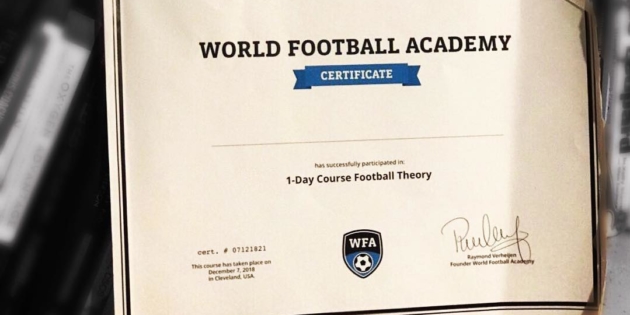“Football” = “Soccer”, not to be confused with “American Football”
1. Double Standards
- Two coaches showed up late to the seminar. Raymond called them out and they laughed about it, thinking he was joking. He wasn’t. What if athletes showed up 15 minutes late to a workout? So why is it okay for coaches to show up late to something?
2. Objectivity vs. Subjectivity
- Many coaches do what they do because of subjective reference experiences. This is based on their personal feelings, tastes, or opinions. I interned under Cal Dietz for a time, so I used to justify training means by saying “Well, Cal does it and his teams are successful” – this is not an acceptable reason.
- What coaches should be doing is operating on objective knowledge. This is not influenced by personal feelings or opinions in considering and representing facts. Regardless of Cal’s success, his training methods need to be objectively criticized to get to the truth of why they should or should not be used.
3. “My Philosophy” is incorrect
- Philosophy is universal, factual, and objective. There is no room for subjectivity.
- It is the application of those philosophies that is subjective. It should be “MY Application” of THE Philosophy.
- Many strength coaches say “My philosophy…”. We should all have the same philosophy.
4. “Mind/Mental” is incorrect, we need to use “Brain/Thinking”
- “Mental toughness” is a vague term that is interpreted differently by everyone. What coaches really want from athletes is not “passion”, “grit”, “will to win”, “fire”, etc. Coaches simply want athletes to use their brain to think actions. It’s the fourth quarter – think next action. The crowd is noisy – think next action. I just got beat to the ball – think next action.
- Athletes have a job to do. Either they think of the job or they think of external factors.
5. What is the goal physically for football athletes?
- Is it greater strength, speed, rate of force development, lactate threshold, VO2max? No.
- Athletes need to be able to execute football actions more often and better for 90 minutes.
6. Kicking around cones – what is the point?
- Without communication and decision making, it is not a football action.
- “Technique” in football never exists in isolation from communication and decision making.
- Athletes get better at executing a technique (Kicking), but not better at executing a football action (Passing).
7. Don’t coach execution
- In chaotic environments, no exact situation presents itself twice. If you coach execution of situations, athletes get confused.
8. What You See Is All There Is
- If an athlete looks “out of shape” in a competition, is it a physical problem? Do they need to condition more? Or do they look de-conditioned because of poor communication, decision making, or execution of decisions?
- Strength coaches see the physical, but is it a physical issue or something else?
9. We use non-contextual words to escape responsibility
- “Not tough”
- “Didn’t want it”
- This takes all responsibility off the coach and onto the players.
10. Raymond’s take on ACL tears
- At the time an ACL tear occurs, the knee muscles needs to co-contract. The brain is responsible for activating these muscles to contract.
- Accumulated fatigue causes the brain’s signal to be slower.
- Coaches (and strength coaches) are responsible for the accumulated fatigue in athletes. Non-contact ACL tears are likely their fault.
Other notes
- “The moment you don’t practice what you preach – you lose credibility, they don’t take you seriously.”
- “Your behavior is your #1 coaching tool.”
Takeaways from Raymond’s book – Football Periodisation: 10 Takeaways



